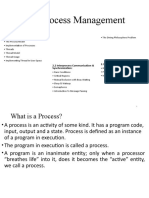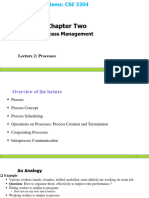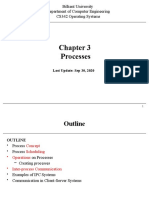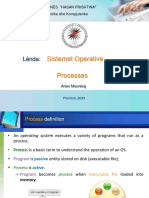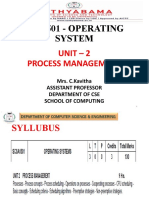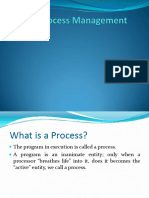0% found this document useful (0 votes)
35 views55 pages03 - Processes
The document discusses processes in operating systems. It defines what a process is and describes key attributes like program code, process ID, memory allocation, and states. It also explains process control blocks, context switching, process creation and termination, and interprocess communication.
Uploaded by
milton21207613Copyright
© © All Rights Reserved
We take content rights seriously. If you suspect this is your content, claim it here.
Available Formats
Download as PDF, TXT or read online on Scribd
0% found this document useful (0 votes)
35 views55 pages03 - Processes
The document discusses processes in operating systems. It defines what a process is and describes key attributes like program code, process ID, memory allocation, and states. It also explains process control blocks, context switching, process creation and termination, and interprocess communication.
Uploaded by
milton21207613Copyright
© © All Rights Reserved
We take content rights seriously. If you suspect this is your content, claim it here.
Available Formats
Download as PDF, TXT or read online on Scribd
/ 55




















